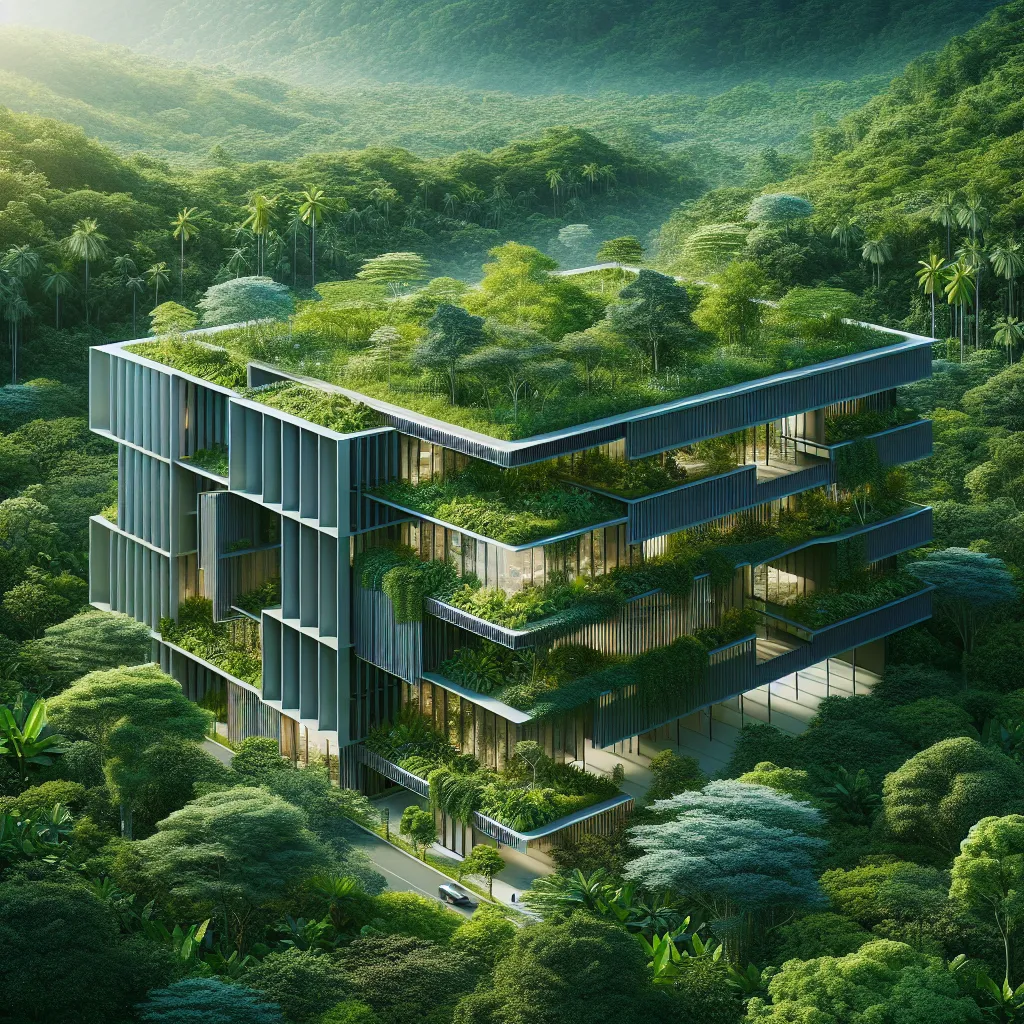Innovative Approaches to Sustainable Architecture
Sustainable architecture has evolved over the years to incorporate innovative approaches that prioritize environmental responsibility and energy efficiency. One of the key innovative approaches to sustainable architecture is the use of advanced materials and technologies to reduce the environmental impact of buildings. This includes the use of sustainable and recycled materials, such as bamboo, straw bales, and reclaimed wood, which not only minimize the carbon footprint but also add a unique aesthetic to architectural designs.
Furthermore, cutting-edge technologies like green roofs, photovoltaic panels, and smart building systems are being integrated into architectural designs to maximize energy efficiency and minimize resource consumption. Green roofs, for example, not only provide natural insulation but also contribute to rainwater management and biodiversity conservation. Photovoltaic panels harness solar energy to power buildings and reduce reliance on non-renewable energy sources. Smart building systems utilize automation and data analytics to optimize energy usage, lighting, and climate control, further reducing environmental impact.
Another innovative approach to sustainable architecture lies in the concept of biophilic design, which seeks to create a strong connection between the built environment and nature. This involves incorporating natural elements such as green walls, indoor gardens, and water features into architectural designs to promote a sense of well-being and harmony with the surroundings. Studies have shown that biophilic design can enhance productivity, reduce stress, and improve overall mental and physical health.
In conclusion, innovative approaches to sustainable architecture encompass a wide range of strategies, from utilizing advanced materials and technologies to embracing biophilic design principles. By integrating these innovative approaches, architects and designers can create buildings that not only minimize environmental impact but also enhance the quality of life for occupants, ultimately shaping a more sustainable and harmonious built environment.
Challenges and Solutions in Sustainable Building Design
The Art of Sustainable Architecture is a field that presents both challenges and solutions in sustainable building design. One of the main challenges in sustainable architecture is achieving energy efficiency while maintaining architectural aesthetics. This requires innovative design solutions to integrate renewable energy sources such as solar panels, wind turbines, and geothermal systems into the building in a visually appealing way. Another challenge is the selection of environmentally friendly and durable materials that reduce the overall environmental impact of the construction process. Finding materials that are both sustainable and aesthetically pleasing can be a significant challenge for architects and designers.
However, there are several solutions that address these challenges. Integrated design processes that involve architects, engineers, and contractors from the early stages of the project can help ensure that sustainable design principles are incorporated seamlessly. Additionally, the use of cutting-edge technology, such as Building Information Modeling (BIM), allows for the simulation of various design scenarios to optimize energy performance and overall sustainability. Moreover, advancements in green building certifications, such as LEED (Leadership in Energy and Environmental Design), provide a framework for sustainable building design and help set standards for environmentally responsible construction practices.
In conclusion, while the challenges in sustainable building design are significant, the innovative solutions being developed in the field of sustainable architecture are promising. By embracing integrated design processes, leveraging advanced technologies, and adhering to established green building standards, architects and designers can overcome these challenges and create buildings that are both visually stunning and environmentally responsible.
The Intersection of Art and Environmental Responsibility in Architecture
The intersection of art and environmental responsibility in architecture is a vital aspect of sustainable design. Sustainable architecture aims to create buildings and spaces that minimize their environmental impact while considering the aesthetic and artistic values. This approach considers the life cycle of materials, energy efficiency, and the overall environmental footprint of the structure.
Art in sustainable architecture goes beyond mere adornment; it can be integrated into the design to serve practical and environmental purposes. For example, incorporating natural light and ventilation through artistic window designs and building orientations not only adds aesthetic value but also reduces the need for artificial lighting and mechanical ventilation, thus lowering energy consumption. Additionally, using locally-sourced and sustainable materials in innovative and artistic ways not only supports local communities but also reduces the carbon footprint associated with transportation and manufacturing.
Furthermore, sustainable architecture often incorporates artistic elements that raise awareness about environmental issues. Public installations, sculptures, and green spaces within architectural designs can serve as educational tools that promote environmental responsibility and appreciation for nature.
In conclusion, the integration of art and environmental responsibility in architecture is essential for creating sustainable and visually appealing structures. By considering artistic expression alongside environmental impact, architects can design buildings that not only benefit the planet but also enrich the human experience.
The intersection of art and environmental responsibility in architecture is a vital aspect of sustainable design. Sustainable architecture aims to create buildings and spaces that minimize their environmental impact while considering the aesthetic and artistic values. This approach considers the life cycle of materials, energy efficiency, and the overall environmental footprint of the structure.
Art in sustainable architecture goes beyond mere adornment; it can be integrated into the design to serve practical and environmental purposes. For example, incorporating natural light and ventilation through artistic window designs and building orientations not only adds aesthetic value but also reduces the need for artificial lighting and mechanical ventilation, thus lowering energy consumption. Additionally, using locally-sourced and sustainable materials in innovative and artistic ways not only supports local communities but also reduces the carbon footprint associated with transportation and manufacturing.
Furthermore, sustainable architecture often incorporates artistic elements that raise awareness about environmental issues. Public installations, sculptures, and green spaces within architectural designs can serve as educational tools that promote environmental responsibility and appreciation for nature.
In conclusion, the integration of art and environmental responsibility in architecture is essential for creating sustainable and visually appealing structures. By considering artistic expression alongside environmental impact, architects can design buildings that not only benefit the planet but also enrich the human experience.
Advancing Sustainable Architecture: Design Principles and Practices
Advancing Sustainable Architecture involves the implementation of design principles and practices that prioritize environmental responsibility, energy efficiency, and social well-being. Embracing sustainable architecture encompasses the use of renewable materials, energy-efficient building systems, and passive design strategies to minimize the environmental impact of built structures. Designing with the consideration of the surrounding ecosystem, utilizing green spaces, and incorporating natural lighting and ventilation are integral aspects of sustainable architecture.
Furthermore, sustainable architecture emphasizes the thoughtful integration of buildings within their surrounding context, promoting community engagement and enhancing the overall quality of life. This approach also extends to the adaptive reuse of existing structures, minimizing construction waste, and reducing the carbon footprint associated with new developments. Sustainable architecture aims to create harmonious and regenerative built environments that contribute to the long-term well-being of both people and the planet.



